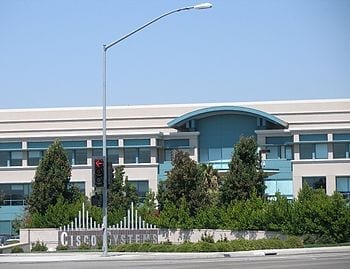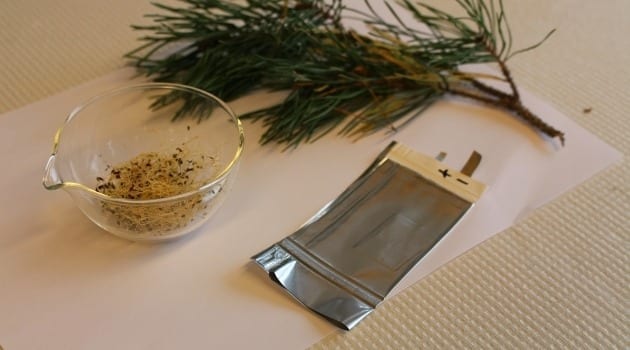
Photo Credit:
PETER ALLEN
UCSB’s Paul Atzberger uses mathematics to advance problems in the sciences
In popular culture, mathematics is often deemed inaccessible or esoteric. Yet in the modern world, it plays an ever more important role in our daily lives and a decisive role in the discovery and development of new ideas — often behind the scenes.
UC Santa Barbara’s Paul Atzberger, a professor in the Department of Mathematics and in mechanical engineering, often works in areas where science and math intersect. Some of his recent research published in the Proceedings of the National Academy of Science (PNAS) and featured on the cover of the journal Soft Matter focuses on problems specific to lipid bilayer membranes. These microscopic structures can form a sheet that envelopes the outside of a biological cell in much the same way that human skin serves as the body’s barrier to the outside environment.
In the PNAS paper, Atzberger and his graduate student Jon Karl Sigurdsson worked in collaboration with the experimental laboratory of Patricia Bassereau and David Lacoste at the Institut Curie in Paris, to develop new mathematical approaches to gain insights into how proteins move around within lipid bilayer membranes.
“Proteins are not just passive voyagers within the bilayer, but rather their very presence can change the local properties of the lipid bilayer membrane in interesting ways,” Atzberger said. “This includes bending the bilayer with a local preferred curvature or changing the nature of a viscous flow. This dual coupling of responding to the local geometry while also affecting it makes it very difficult to formulate concise models and to make predictions.”
To address these issues, Atzberger developed a statistical mechanics description of the membrane sheet and the proteins based on his past work on immersed-boundary approximations. The idea is to treat the heterogeneous membrane-protein material uniformly but use a moving marker to demarcate the parts associated with the proteins. This approach allows for a simple and reliable description, which captures many of the essential features of membrane-protein dynamics. This not only facilitates performing analytic calculations but also carrying out efficient computational simulations.
“It used to be just theory and experiment,” Atzberger added. “Now computation serves an ever more important third branch of science. With simulations, one can take underlying assumptions into account in detail and explore their consequences in novel ways. Of course, theory and abstraction are still very important to gain understanding. What computation provides is the ability to grapple with a level of detail and complexity that is often simply beyond the reach of pure theoretical methods.”
The Latest on: Mathematics and science
[google_news title=”” keyword=”Mathematics and science” num_posts=”10″ blurb_length=”0″ show_thumb=”left”]
via Google News
The Latest on: Mathematics and science
- FHSU’s next Science Café on retroviruses set for April 29on April 28, 2024 at 2:30 am
By FHSU University CommunicationsFort Hays State University’s next Science Café will be held on Monday, April 29.This month’s presentation,& ...
- Local middle school National Finalist to compete in National Science Bowl®on April 27, 2024 at 5:18 pm
Officials with the Department of Energy (DOE) announced that Amarillo’s Bonham Middle School are National Finalist to compete for the National Science Bowl® scheduled today in Washington, ...
- Best & Brightest: Brilliance in mathematics, linguistics define studenton April 27, 2024 at 4:00 am
Lucas Anderson, a senior at The Village High School, was diagnosed with autism spectrum disorder but far from letting it cripple his life, Anderson said ...
- Google Thinks It Can Cash In on Generative AI. Microsoft Already Hason April 25, 2024 at 6:29 pm
While both Alphabet and Microsoft boasted strong quarterly earnings, only one tech giant showed that its generative AI bet is starting to pay off.
- Alan Alda On Axions, Dark Matter And Higher Math—Closet Science Geek?on April 21, 2024 at 5:55 pm
Richard Feynman once said that if you can’t explain it to a child, you may not understand it yourself. That really puts a burden on the explainer.” ...
- Petal teacher selected as state finalist in Presidential Awards for Excellence in Mathematics and Science Teachingon April 19, 2024 at 3:28 pm
Broadbent has been teaching fifth grade math at Petal Upper Elementary School for 12 years. Administrators said Broadbent’s knowledge of math and her students’ needs earned her the nomination.
- Opinion: How California’s ‘math wars’ are hurting Black and Latino studentson April 19, 2024 at 3:01 am
Proponents say students are more motivated to study data science than algebra. But this approach fails to teach kids essential skills and risks limiting some populations to certain courses.
- Most Alaska students are behind in math, science and language arts, latest statewide assessments showon April 18, 2024 at 7:01 pm
The majority of Alaska students scored below grade level proficiency in statewide math, science and language arts assessments taken last spring — even after the state lowered ...
- Northeast Wisconsin teachers named finalists for major national math, science awardon April 18, 2024 at 6:47 am
(WLUK) -- Two Northeast Wisconsin teachers are named finalists for a national award. The Wisconsin Department of Public Instruction announced Thursday six Wisconsin mathematics and science teachers ...
- Maine School of Science and Mathematics students place at state meeton April 17, 2024 at 9:00 pm
LIMESTONE — Maine School of Science and Mathematics, Maine’s only magnet high school and one of the few public boarding schools in the country, took first place at the 45th annual Maine State Math ...
via Bing News









